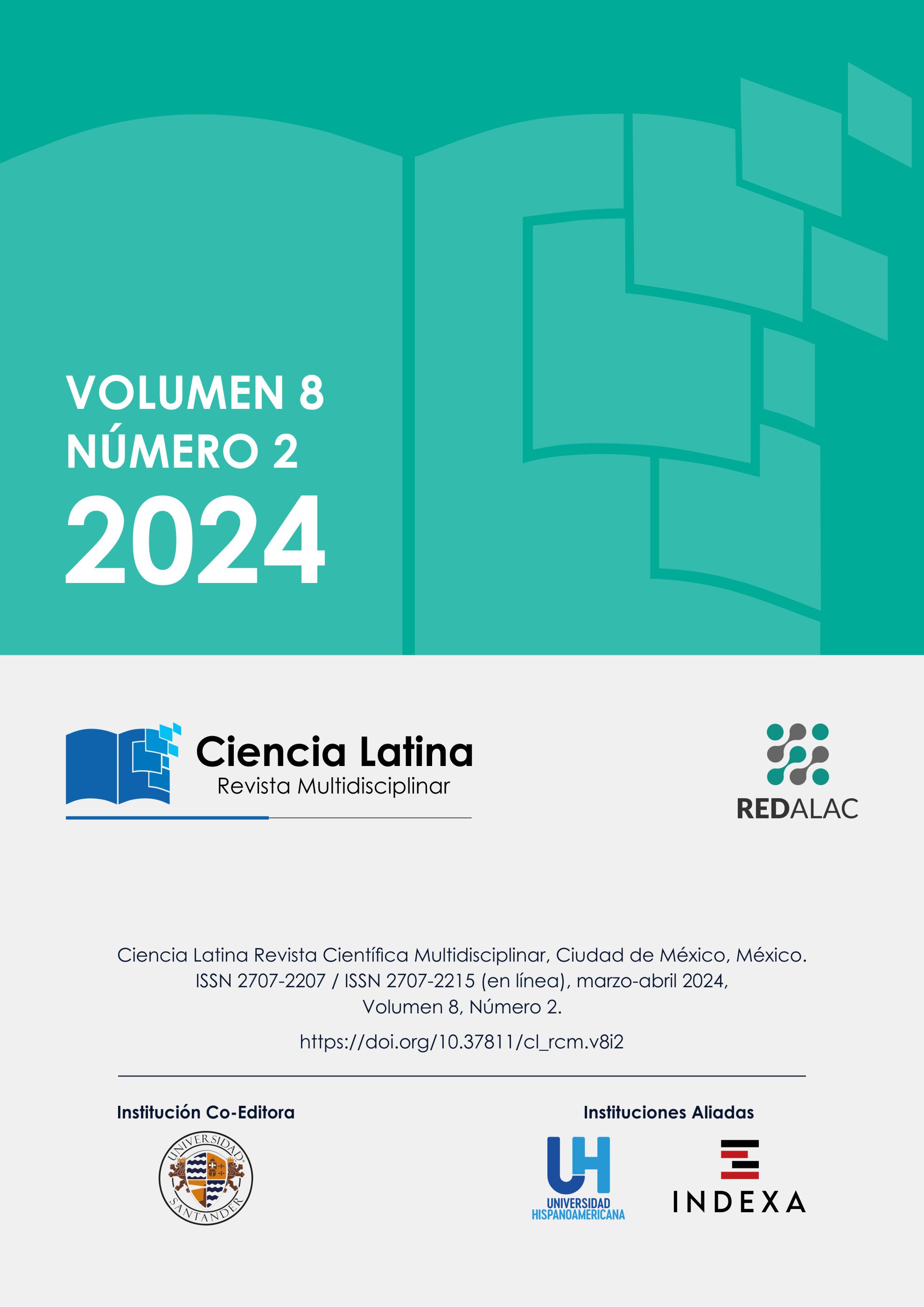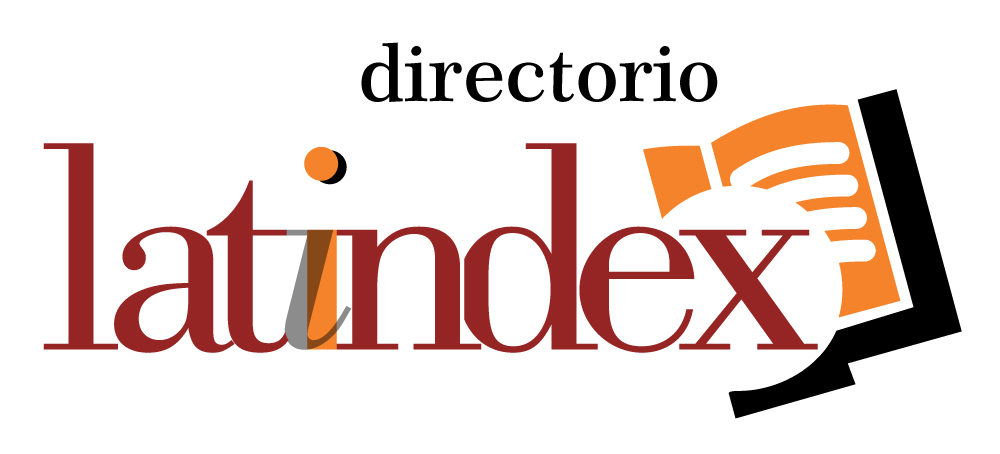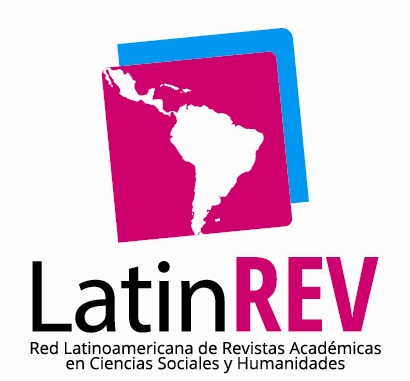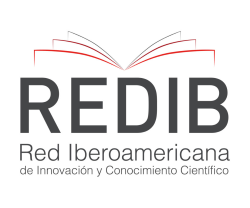Mecanismos moleculares en afección miocárdica fetal inducida por diabetes mellitus gestacional: Artículo de Revisión
Resumen
Introducción: La Diabetes Mellitus Gestacional (DMG) es una condición metabólica compleja que afecta la salud materna y fetal, la cuál a incrementado su diagnóstico en los últimos años. Se ha asociado con anomalías cardiacas fetales (ACF), por lo que es fundamenteal conocer las bases moleculares de su desarrollo. Objetivo: Analizar literatura científica actual, para identificar mecanismos y vías moleculares clave implicados en la afección miocárdica fetal. Metodología: Consulta de bases de datos Pubmed, Scopus y Web of Science. Las publicaciones consideradas fueron del periodo 2019-2024 y excluyendo artículos que analizaran alteraciones cardíacas fetales no relacionadas con DMG. Resultados: Se reconocieron genes, mecanismos y vías moleculares, así como mecanismos clave en la morfogénesis cardíaca, particularmente vías relacionadas con la hiperglucemia e hiperinsulinemia, desregulación de factores de crecimiento, de genes encargados del desarrollo miocárdico, que conducen a ACF.Conclusión: La hiperglucemia e hiperinsulinemia materna y fetal, conducen a modificación de la expresión de genes y crecimiento celular miocárdico en la ACF asociada con DMG.
Descargas
Citas
Alex, N. S., Khan, H. R., Ramachandra, S. G., & Medhamurthy, R. (2023). Pregnancy-associated Steroid Effects on Insulin Sensitivity, Adipogenesis, and Lipogenesis: Role of Wnt/β-Catenin Pathway. https://doi.org/10.1210/jendso/bvad076
Balachandiran, M., Bobby, Z., Dorairajan, G., Gladwin, V., Vinayagam, V., & Packirisamy, R. M. (2021). Decreased maternal serum adiponectin and increased insulin-like growth factor-1 levels along with increased placental glucose transporter-1 expression in gestational diabetes mellitus: Possible role in fetal overgrowth. Placenta, 104, 71–80.
https://doi.org/10.1016/J.PLACENTA.2020.11.008
Basu, M., & Garg, V. (2018). Maternal hyperglycemia and fetal cardiac development: Clinical impact and underlying mechanisms. En Birth Defects Research (Vol. 110, Número 20, pp. 1504–1516). John Wiley and Sons Inc. https://doi.org/10.1002/bdr2.1435
Buijtendijk, M. F. J., Barnett, P., & van den Hoff, M. J. B. (2020). Development of the human heart. American journal of medical genetics. Part C, Seminars in medical genetics, 184(1), 7–22. https://doi.org/10.1002/AJMG.C.31778
Chen, L., Yang, T., Chen, · Lizhang, Wang, L., Wang, T., Zhao, L., Ye, Z., Zhang, S., Luo, · Liu, Zheng, Z., & Qin, · Jiabi. (2019). Risk of congenital heart defects in offspring exposed to maternal diabetes mellitus: an updated systematic review and meta-analysis. 300, 1491–1506. https://doi.org/10.1007/s00404-019-05376-6
Dale Abel, E. (2021). Insulin signaling in the heart. https://doi.org/10.1152/ajpendo.00158.2021
Depla, A. L., Wit, L. DE, Steenhuis, T. J., Slieker, M. G., Voormolen, D. N., Scheffer, P. G., Heus, R. DE, Van Rijn, B. B., & Bekker, M. N. (2021). Effect of maternal diabetes on fetal heart function on echocardiography: systematic review and meta-analysis. Ultrasound Obstet Gynecol, 57, 539–550. https://doi.org/10.1002/uog.22163
Engineer, A., Saiyin, T., Greco, E. R., & Feng, Q. (2019). Say NO to ROS: Their Roles in Embryonic Heart Development and Pathogenesis of Congenital Heart Defects in Maternal Diabetes. Antioxidants, 8, null. https://doi.org/10.3390/antiox8100436
Hufnagel, A., Dearden, L., Fernandez-Twinn, D. S., & Ozanne, S. E. (2022). Programming of cardiometabolic health: the role of maternal and fetal hyperinsulinaemia. The Journal of endocrinology, 253(2), R47–R63. https://doi.org/10.1530/JOE-21-0332
Ibrahim, S., Gaborit, B., Lenoir, M., Collod-Beroud, G., & Stefanovic, S. (2023). Maternal Pre-Existing Diabetes: A Non-Inherited Risk Factor for Congenital Cardiopathies. International journal of molecular sciences, 24(22). https://doi.org/10.3390/IJMS242216258
Illsley, N. P., & Baumann, M. U. (2020). Human placental glucose transport in fetoplacental growth and metabolism ☆. https://doi.org/10.1016/j.bbadis.2018.12.010
Jaime-Cruz, R., Sánchez-Gómez, C., Villavicencio-Guzmán, L., Lazzarini-Lechuga, R., Patiño-Morales, C. C., García-Lorenzana, M., Ramírez-Fuentes, T. C., & Salazar-García, M. (2023). Embryonic Hyperglycemia Disrupts Myocardial Growth, Morphological Development, and Cellular Organization: An In Vivo Experimental Study. Life, 13(3). https://doi.org/10.3390/LIFE13030768
Jonker, S. S., Giraud, G. D., Chang, E. I., Elman, M. R., & Louey, S. (2020). Coronary vascular growth matches IGF-1-stimulated cardiac growth in fetal sheep. FASEB journal : official publication of the Federation of American Societies for Experimental Biology, 34(8), 10041–10055. https://doi.org/10.1096/FJ.202000215R
Katano, W., Moriyama, Y., Takeuchi, J. K., & Koshiba-Takeuchi, K. (2019). Cardiac septation in heart development and evolution. Development Growth and Differentiation, 61(1), 114–123. https://doi.org/10.1111/DGD.12580
Kuwahara, K., Nishikimi, T., & Nakao, K. (2012). Transcriptional regulation of the fetal cardiac gene program. En Journal of Pharmacological Sciences (Vol. 119, Número 3, pp. 198–203). Japanese Pharmacological Society. https://doi.org/10.1254/jphs.12R04CP
Li, T., Weng, X., Cheng, S., Wang, D., Cheng, G., Gao, H., & Li, Y. (2021). Wnt3a upregulation is involved in TGFβ1-induced cardiac hypertrophy. Cytokine, 138.
https://doi.org/10.1016/J.CYTO.2020.155376
Liu, Y., Chen, S., Zü, L., Black, G. C., Choy, M.-K., Li, N., & Keavney, B. D. (2019). Global birth prevalence of congenital heart defects 1970-2017: updated systematic review and meta-analysis of 260 studies. International Journal of Epidemiology, 455–463.
https://doi.org/10.1093/ije/dyz009
Magadum, A., Singh, N., Kurian, A. A., Munir, I., Mehmood, T., Brown, K., Sharkar, M. T. K., Chepurko, E., Sassi, Y., Oh, J. G., Lee, P., Santos, C. X. C., Gaziel-Sovran, A., Zhang, G., Cai, C. L., Kho, C., Mayr, M., Shah, A. M., Hajjar, R. J., & Zangi, L. (2020). Pkm2 Regulates Cardiomyocyte Cell Cycle and Promotes Cardiac Regeneration. Circulation, 141(15), 1249–1265. https://doi.org/10.1161/CIRCULATIONAHA.119.043067
Malaza, N., Masete, M., Adam, S., Dias, S., Nyawo, T., & Pheiffer, C. (2022). A Systematic Review to Compare Adverse Pregnancy Outcomes in Women with Pregestational Diabetes and Gestational Diabetes. International journal of environmental research and public health, 19(17). https://doi.org/10.3390/IJERPH191710846
Modzelewski, R., Stefanowicz-Rutkowska, M. M., Matuszewski, W., & Bandurska-Stankiewicz, E. M. (2022). Gestational Diabetes Mellitus—Recent Literature Review. En Journal of Clinical Medicine (Vol. 11, Número 19). MDPI. https://doi.org/10.3390/jcm11195736
Moon, J. H., & Jang, H. C. (2022). Gestational Diabetes Mellitus: Diagnostic Approaches and Maternal-Offspring Complications. Diabetes & metabolism journal, 46(1), 3–14. https://doi.org/10.4093/DMJ.2021.0335
Nakamura, M., & Sadoshima, J. (2018). Mechanisms of physiological and pathological cardiac hypertrophy. Nature Reviews Cardiology 2018 15:7, 15(7), 387–407. https://doi.org/10.1038/s41569-018-0007-y
O’Donnell, A., & Yutz, K. E. (2020). Mechanisms of heart valve development and disease. Development (Cambridge, England), 147(13). https://doi.org/10.1242/DEV.183020
Oldfield, C. J., Duhamel, T. A., & Dhalla, N. S. (2020). Mechanisms for the transition from physiological to pathological cardiac hypertrophy. Canadian journal of physiology and pharmacology, 98(2), 74–84. https://doi.org/10.1139/CJPP-2019-0566
Ozturk, M., Agaoglu, Z., Ozturk, F. H., Yakut, K., Öcal, F. D., Oguz, Y., & Caglar, T. (2023). Evaluation of fetal myocardial performance index in gestational diabetes mellitus. Congenital Anomalies, 63(5), 164–169. https://doi.org/10.1111/CGA.12531
Papazoglou, A. S., Moysidis, D. V., Panagopoulos, P., Kaklamanos, E. G., Tsagkaris, C., Vouloagkas, I., Karagiannidis, E., Tagarakis, G. I., Papamitsou, T., Papanikolaou, I. G., Christodoulaki, C., & Vrachnis, N. (2022). “Maternal diabetes mellitus and its impact on the risk of delivering a child with congenital heart disease: a systematic review and meta-analysis”. The Journal of Maternal-Fetal & Neonatal Medicine, 35(25), 7685–7694. https://doi.org/10.1080/14767058.2021.1960968
Patey, O., Carvalho, J. S., & Thilaganathan, B. (2019). Perinatal changes in fetal cardiac geometry and function in diabetic pregnancy at term. Ultrasound in Obstetrics & Gynecology, 54(5), 634–642. https://doi.org/10.1002/UOG.20187
Rodríguez Gómez, J. C. (2023). La importancia de la diversidad y la inclusión en el ámbito educativo. Estudios Y Perspectivas Revista Científica Y Académica , 3(2), 16-47. https://doi.org/10.61384/r.c.a.v3i2.30
Ramírez Gómez , C. A. (2023). La Ansiedad Abordada a través del Psicoanálisis Relacional. Revista Científica De Salud Y Desarrollo Humano, 4(2), 14-38. https://doi.org/10.61368/r.s.d.h.v4i2.24
Ramírez, D. (2023). El Manejo del Mercado de Criptomonedas y sus Consecuencias Jurídicas y Tributarias. Emergentes - Revista Científica, 3(1), 114-131. https://doi.org/10.60112/erc.v3i1.24
Ren, Y., Zhou, Q., Yan, Y., Chu, C., Gui, Y., & Li, X. (2011). Characterization of fetal cardiac structure and function detected by echocardiography in women with normal pregnancy and gestational diabetes mellitus. Prenatal Diagnosis, 31(5), 459–465.
https://doi.org/10.1002/pd.2717
Ren, Z., Luo, S., Cui, J., Tang, Y., Huang, H., & Ding, G. (2023). Research Progress of Maternal Metabolism on Cardiac Development and Function in Offspring. Nutrients, 15(15). https://doi.org/10.3390/NU15153388
Sibiak, R., Ozegowska, K., Wender-Ozegowska, E., Gutaj, P., Mozdziak, P., & Kempisty, B. (2022). Fetomaternal Expression of Glucose Transporters (GLUTs)-Biochemical, Cellular and Clinical Aspects. Nutrients, 14(10). https://doi.org/10.3390/NU14102025
Salazar Ceciliano, L. F., & Vargas Morales, R. (2023). Propuesta de Herramienta de Modelo de Costos para Cobrar Servicios Profesionales en Diseño Publicitario. Sapiencia Revista Científica Y Académica , 3(1), 24-38. https://doi.org/10.61598/s.r.c.a.v3i1.38
Salazar Ceciliano, L. F., & Vargas Morales, R. (2023). Propuesta de Herramienta de Modelo de Costos para Cobrar Servicios Profesionales en Diseño Publicitario. Sapiencia Revista Científica Y Académica , 3(1), 24-38. https://doi.org/10.61598/s.r.c.a.v3i1.38
Sweeting, A., Wong, J., Murphy, H. R., & Ross, G. P. (2022). A Clinical Update on Gestational Diabetes Mellitus. En Endocrine Reviews (Vol. 43, Número 5, pp. 763–793). Endocrine Society. https://doi.org/10.1210/endrev/bnac003
Tan, C. M. J., & Lewandowski, A. J. (2020). The Transitional Heart: From Early Embryonic and Fetal Development to Neonatal Life. Fetal diagnosis and therapy, 47(5), 373–386. https://doi.org/10.1159/000501906
Wang, H., Li, N., Chivese, T., Werfalli, M., Sun, H., Yuen, L., Hoegfeldt, C. A., Elise Powe, C., Immanuel, J., Karuranga, S., Divakar, H., Levitt, Na. A., Li, C., Simmons, D., & Yang, X. (2022). IDF Diabetes Atlas: Estimation of Global and Regional Gestational Diabetes Mellitus Prevalence for 2021 by International Association of Diabetes in Pregnancy Study Group’s Criteria. Diabetes Research and Clinical Practice, 183.
https://doi.org/10.1016/j.diabres.2021.109050
Wang, M., Li, Y., Li, S., & Lv, J. (2022). Endothelial Dysfunction and Diabetic Cardiomyopathy. Frontiers in Endocrinology, 13. https://doi.org/10.3389/FENDO.2022.851941/PDF
Wang, P., Xie, J., Jiao, X.-C., Ma, S.-S., Liu, Y., Yin, W.-J., Tao, R.-X., Hu, H.-L., Zhang, Y., Chen, X.-X., Tao, F.-B., & Zhu, P. (2021). Maternal Glycemia During Pregnancy and Early Offspring Development: A Prospective Birth Cohort Study. The Journal of Clinical Endocrinology & Metabolism, 106(8), 2279–2290. https://doi.org/10.1210/clinem/dgab331
Yang, Y.; Siau, K.L. A Qualitative Research on Marketing and Sales in the Artificial Intelligence Age. Available online: https://www.researchgate.net/profile/Keng-Siau-2/publication/325934359_A_Qualitative_Research_on_Marketing_and_ Sales_in_the_Artificial_Intelligence_Age/links/5b9733644585153a532634e3/A-Qualitative-Research-on-Marketing-and-Sales- in-the-Artificial-Intelligence-Age.pdf (accessed on 18 July 2023).
Zhang, T. N., Huang, X. M., Zhao, X. Y., Wang, W., Wen, R., & Gao, S. Y. (2022). Risks of specific congenital anomalies in offspring of women with diabetes: A systematic review and meta-analysis of population-based studies including over 80 million births. En PLoS Medicine (Vol. 19, Número 2). Public Library of Science.
https://doi.org/10.1371/journal.pmed.1003900
Zhao, M. T., Ye, S., Su, J., & Garg, V. (2020). Cardiomyocyte Proliferation and Maturation: Two Sides of the Same Coin for Heart Regeneration. Frontiers in cell and developmental biology, 8. https://doi.org/10.3389/FCELL.2020.594226
Zimmerman, M. S., Smith, A. G. C., Sable, C. A., Echko, M. M., Wilner, L. B., Olsen, H. E., Atalay, H. T., Awasthi, A., Bhutta, Z. A., Boucher, J. L. A., Castro, F., Cortesi, P. A., Dubey, M., Fischer, F., Hamidi, S., Hay, S. I., Hoang, C. L., Hugo-Hamman, C., Jenkins, K. J., … Kassebaum, N. J. (2020). Global, regional, and national burden of congenital heart disease, 1990–2017: a systematic analysis for the Global Burden of Disease Study 2017. The Lancet Child and Adolescent Health, 4(3), 185–200. https://doi.org/10.1016/S2352-4642(19)30402-X
Derechos de autor 2024 Héctor Murillo Bargas, María Guadalupe Sánchez Parada, Alejandro Salvador Gómez Cabrera, Ana Elizabeth González Santiago

Esta obra está bajo licencia internacional Creative Commons Reconocimiento 4.0.











.png)




















.png)
1.png)


